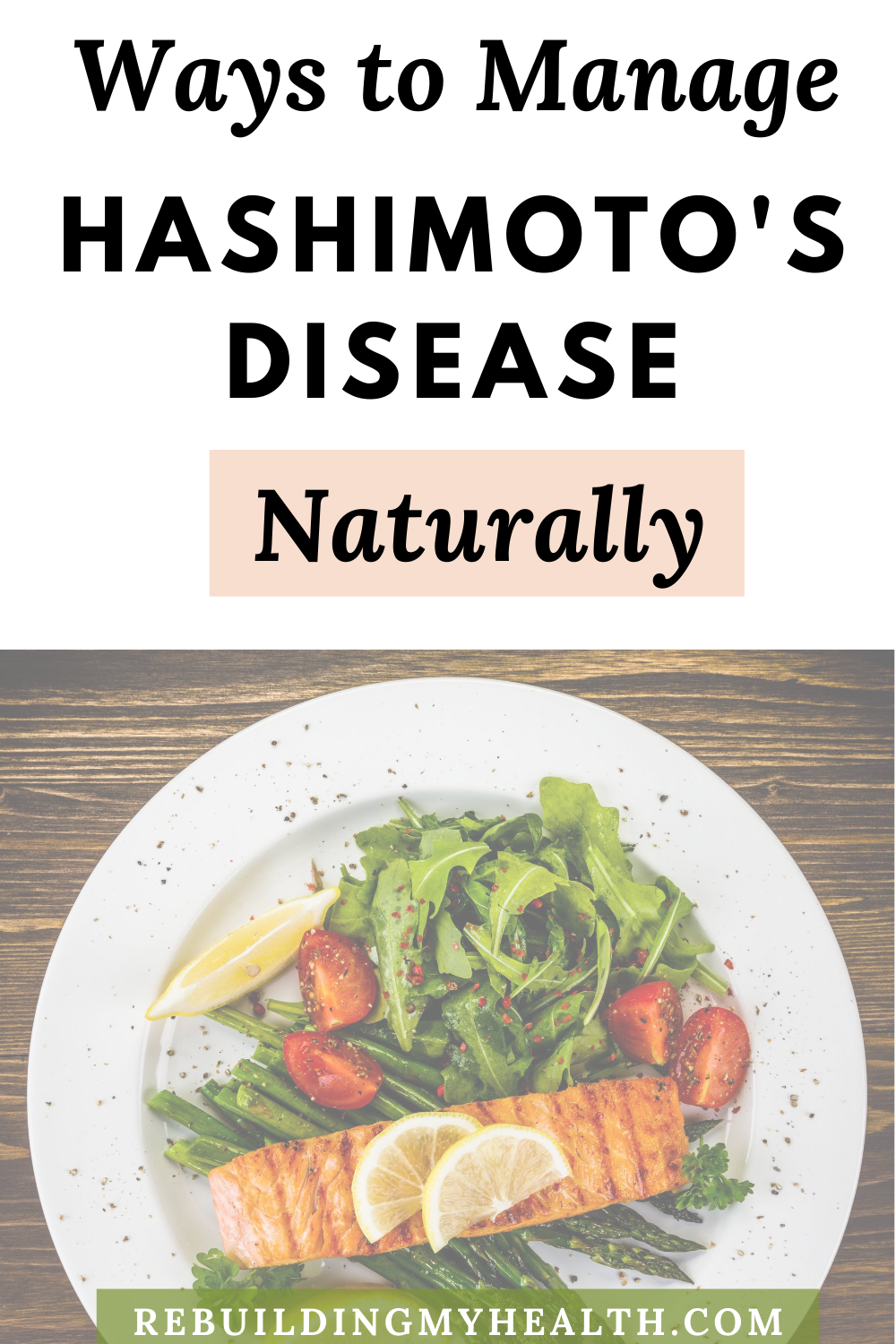Missouri Law Student Controls Hashimoto’s Disease – without Medication
“I still have fluctuations and flare-ups, but I found a happy medium with diet and exercise to manage Hashimoto’s naturally.”
– Hannah Schweissguth
For Hannah, the signs of Hashimoto’s disease were there all along. And yet, it would take nearly a decade to get a diagnosis.
The symptoms began in her teen years: irregular periods, anxiety, depression, light-headedness, severe constipation, rapid weight gain and extreme fatigue. She slept every chance she could – until the last moment before having to race to school and then immediately upon returning.
To squelch symptoms, doctors prescribed anti-depressants and birth control.
“When you’re having very serious bleeding issues and acne, all you care about is getting that taken care of,” Hannah says. “I did the NuvaRing, which is now linked to all kinds of cancer and other stuff.”
On birth control, however, Hannah felt even worse and soon stopped using it.
In Hannah’s search for answers, doctors ordered iodine imaging testing, which uncovered an enlarged thyroid. Still, doctors didn’t consider it abnormal enough to recommend any course of action.
Suspecting Hashimoto’s Disease
In college, as a nutrition major, Hannah ate what she thought was a healthy diet, and exercised, but digestive distress continued.
Numerous foods caused bloating, including some vegetables. And anything heavy in fat or garlic induced vomiting. What’s more, she often felt light-headed after eating.
Frequent digestive distress, plus blood in her stool, sent her back to the doctor for testing. Sores in her intestines showed the wear and tear on her digestive tract.
“As a 21-year-old, it just didn’t feel right,” she says. “I was going back and forth with constipation, severe diarrhea, nausea and vomiting. I was really gaining weight. I was sleeping all the time. I was just absolutely miserable.”
With so much awry in her body, Hannah thought she could count, at least, on solid dental health – after years of perfect checkups. Instead, the dentist suddenly found six new cavities, and then seven more on the following visit.
“The dentist said, ‘I know you and I know your nutrition,’” she says. “I asked if thyroid could be the cause and he said, ‘Absolutely.’”
Hannah suspected Hashimoto’s disease as the cause of her health fallout. With the autoimmune disorder, the immune system attacks the thyroid gland, leading to symptoms such as fatigue, weight gain, constipation, heavy periods, depression and joint pain. Hannah had all of the above, and more.
But because thyroid testing had not turned up out-of-range numbers, she didn’t have a diagnosis.
Frustrated, she took her health into her own hands.
“I threw all my medication in the trash,” she recalls. “I was done with it and I just started managing it with my diet 100 percent. But I don’t recommend people go off their medication without talking to their doctor because you don’t know like what the effects might be.”
Refining Her Diet
After ditching medications, Hannah turned to the low FODMAP diet in hopes of reducing her symptoms. The diet eliminates foods that may cause digestive distress such as onions, garlic, avocadoes, some fruit and asparagus.
At the same time, she cut out other foods that bothered her specifically, including lactose, nightshades, root vegetables and cruciferous vegetables.
“Diet helps so much,” she says. “I never get nauseous anymore. I never get the fluctuation in my bowel movements anymore. The bloating is significantly better as well. And the crazy thing is, once I reduced all that inflammation, there are things that I can have again that don’t bother me like they did before.”
With diet and regular exercise, her hair finally started growing again after years at the same length. And after she switched to non-toxic beauty products, her skin cleared.
Around that time, Hannah also took the initiative to get her own testing for Hashimoto’s. Her thyroid stimulating hormone (TSH) levels turned up, not surprisingly, borderline high, while her T3 levels were borderline low – characteristic markers of Hashimoto’s.
“I was kind of irritated,” she says. “I saw that my numbers were out of range and continued managing it myself. I realized that needs to be my number-one focus because it’s more than likely my hormones are causing all these issues.”

Finally…A Hashimoto’s Disease Diagnosis
Among the carousel of physicians that Hannah saw was a rheumatologist, who took the time to look back at all her previous records. Upon doing so, he noticed one test where Hannah’s TSH was double what it was supposed to be. But Hannah’s doctor at the time never mentioned it.
“I should have been diagnosed with Hashimoto’s right there on the spot,” she says. “My rheumatologist was like, ‘I’m surprised that your thyroid is not coming out of your neck by now. I had been managing pretty well with diet and exercise.”
Given that she controls Hashimoto’s disease naturally, Hannah and her doctor agreed to let her continue on that course instead of adding medication to the mix.
“I still have fluctuations and flare ups, but I found a happy medium with diet and exercise to manage Hashimoto’s naturally,” she says.
A Customized Paleo Diet
Over the years, Hannah has experimented with various diets and carefully observed any reactions. While she was vegetarian for a while – because of her passion for animal welfare – she went back to eating responsibly sourced, organic meats.
“A vegetarian diet was impacting my health. I wasn’t getting as many omega-3s, and other nutrients in meat like iron and B12 vitamins,” she says.
Today, her diet is a customized mix of low FODMAP, the Specific Carbohydrate Diet and Autoimmune Paleo. In short, she eats healthy fats, lean protein, fruit and veggies.
She adds a glutamine supplement with prebiotics and other gut-healing properties, along with cinnamon to manage her blood sugar.
On top of diet, she makes sure to get plenty of sleep and exercise.
Seeing Results
With all that dedication, Hannah’s Hashimoto’s disease symptoms are measurably reduced. Her lab tests now fall closer to the normal range.
Her hair grows faster, her skin is clearer and her moods are much improved. The number of food sensitivities, once 36, have dropped to 12. And her digestion is stable.
“My inflammation is better,” she says. “I have no joint pain, even with 13 hours on my feet.”
Passionate about food safety, she earned her master’s degree in food safety regulation. And this month, she starts law school with the ultimate goal of working in food safety.
Years of frustration with doctors and a lack of diagnosis have lit a fire for her. Now, she coaches others on how to manage Hashimoto’s naturally.
“I experienced a lot of different health issues because I was told that I was fine,” she says. “Having that knowledge of the path I have to take to manage this gave me the fuel and the desire to seek more information to change it.”
Hannah’s Hashimoto’s Disease Tips
For years, Hannah has managed her thyroid condition without medication. Here are her tips for taking a natural approach.
– Try an elimination diet – Strip your diet down to the basics. As you bring foods back, pay attention to what bothers you. Hannah also recommends food sensitivity testing to help pinpoint reactive foods.
Based on your symptoms, choose the right diet. If inflammation is the biggest problem, try something like the Autoimmune Paleo (AIP) diet. If digestive symptoms bother you more, perhaps try low FODMAP, Hannah suggests.
– Clean up your beauty regimen – Hannah eliminated all topical products and candles with toxins in them, such as parabens, phthalates and PCBs (polychlorinated biphenyl) – which can disrupt hormones.
– Exercise regularly – Hannah suspected she had estrogen dominance, and thus started working out in hopes of increasing her testosterone and reducing her stress and cortisol levels.
– Maintain a healthy state of mind – Reduce stress and anxiety by planning out your day, journaling and practicing your favorite self-care activities.
– Educate yourself – “The more you can read, and understand your symptoms and what’s happening in your body, the more direction you’ll have on what to focus on.”
For more tips on managing Hashimoto’s naturally, follow Hannah on Instagram.
What works for one person may not work for another. Consult your health practitioner for professional health advice.

The information on this site is for educational and inspirational purposes only and is not intended to replace the advice of qualified professionals. Keep in mind that what works for one person may not work for another. Always consult your healthcare practitioners before beginning new approaches or treatments. Some links on Rebuilding My Health may be affiliate links. This means that we may receive a commission - with no additional cost to you - if you make any purchases using those affiliate links. Rebuilding My Health is a participant in the Amazon Services LLC Associates Program. Learn more.

